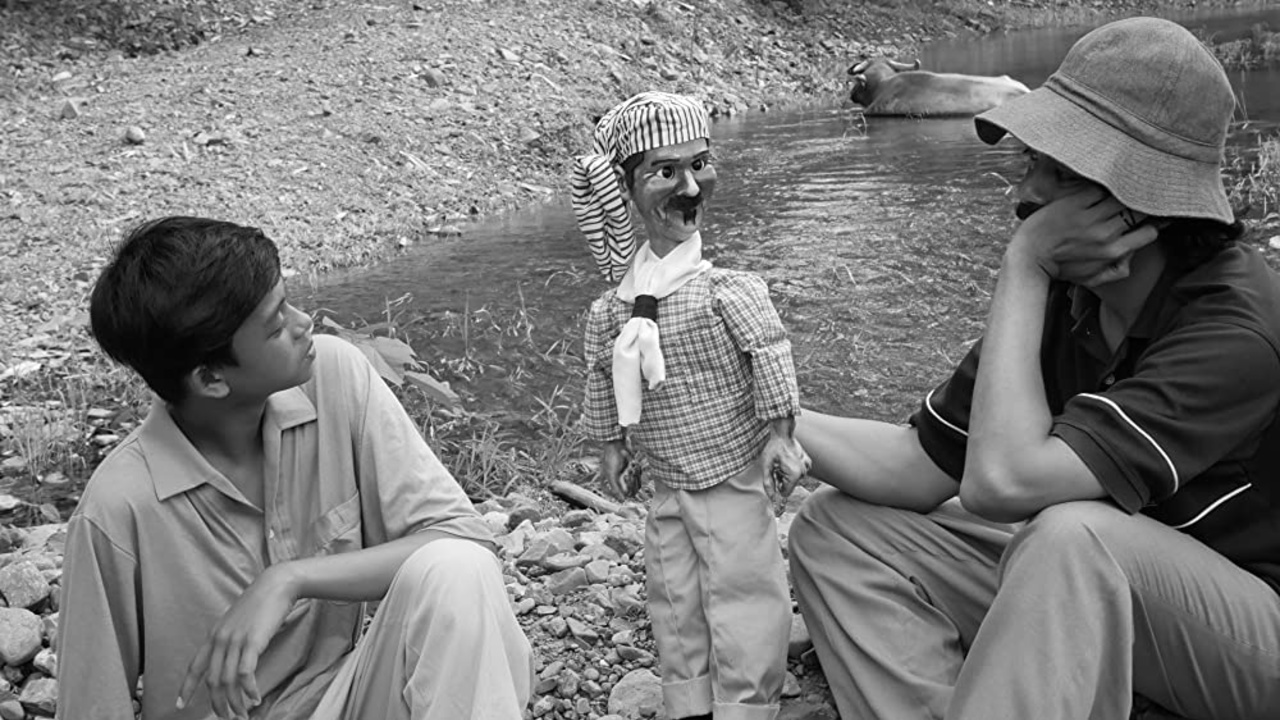




Dir.: Lav Diaz; Cast: John Lloyd Cruz, Mae Paner, Dolly De Leon, Jonathan Francisco, Teroy Guzman, Hazel Orencio, Earl Ignacio, Ceian Hazel Gabuco; Philippines 2020, 450 min.
Philippine director Lav Diaz once again returns to the world of his homeland politics with an allegorical fable that takes place in the post-war period, which saw the socialist HUK movement crushed by the CIA and the army, and General Ramon Magsaysay, who later died in a plane crash in 1957, ascend to the Presidency. Diaz uses a mostly linear structure, his protagonists often verbally referring to the past in a fable that is in length compared to his previous films, the longest of which is 660 minutes
We meet the central protagonist, ‘bodapil’ (vaudeville) performer Hernando Alamada (Cruz) and his puppet Ha, on board the luxury cruiser ‘Mayflower’, just as Magsaysay’s death is being announced over the radio. Alamada has had a successful run, but is looking forward to joining his family in the village of his birth where he wants to marry his sweetheart Rosetta. He has brought many books for his sister and her two children, making it clear how important reading is. Alas, the gift for Rosetta will never reach her since she has been placed under house arrest destined to marry a local bigwig who will pay off her family’s debts which too numerous even for Hernando to finance. There is no chance even for the two lovers to meet so tight is the security patrol where she lives. Heartbroken, Alamada leaves family and village for good setting off on an eventful journey where his path will cross with several travellers whose stories will inform the historical contact of the narrative.
On the road to Diwata he first meets Joselito (Francisco) who is heading for the mythical island lured by the famous gold rush, even though he cannot even afford a ticket for the boat. Then there’s a sex worker called Dahlia (De Leon), and Sister Lorenza (Paner), a Catholic who are also heading for Diwata, the latter to build a mission to save the souls of the gold diggers. And the travellers arrive at the harbour only to discover Kuyang (Guzman) and his psychotic sister Matilde (Orenico) are now in control of the boats to Diwata, with the help of a vicious militia, and the fares have gone up astronomically, Hernando is now the only one who can afford to cross.
Joselito then falls in love with blind flower seller Ina (Gabuco) – a nod to Chaplin – Kuyang, who has seen Hernando perform on the Mayflower, arranges a ‘bodapil’ evening for Hernando and his puppet, which is violently interrupted by guerrillas, who kill Joselito and Ina – the two most innocent characters. Hernando decides that only Ha should speak from now on, setting in motion a long, poetic journey of redemption.
Aesthetically as well as contents wise, History of Ha is closest to Melancholia (2008), in which Diaz reflected on the guerrilla movement of the 1960s when the middle class Philippines took up arms against the tyrannical Marcos regime. The tropical rain forest features extensively in both features, even though the outcome could not be more different. Again, Diaz entranced his audience with his languorous characterisations, the camera often not leaving the field of vision until well after the protagonists have left the frame.
Life in the rainforest is never romanticised, violence is kept to a minimum, even though the threat of it hangs over nearly every scene. Even though dialogue does play an important role, particularly in the discussions between Hernando and his three companions, whom he tries to dissuade from their journey to Diwata, long sections of the feature do without words – again creating a particular intimacy with the audience. The History of Ha is set in an around the village of Once again Dias casts professionals actors alongside indigenous non-pros creating an authenticity which few other filmmakers achieve. Shot mainly in the village of Sibaltan (Plawan), Diaz, as often in his features, uses the indigenous population, integrating them with professional actors and creating an authenticity few film makers achieve. It is an enigma, how Diaz again is able to commit his audience to be part of his characters’ struggle. This is not a question of ideology, but the result of projection and transference, where the feature’s images bind the audience emotionally to the characters.
The History of Ha was scheduled to premiere at the 2020 Locarno Festival, which was postponed. Diaz, known for his prolific work ethos, is now in post-production for two more features: Servando Magdamag and Henrico’s Farm, the latter with Charo Santos Concio, the titular heroine of Diaz’ Venice winner The Woman Who Left (2016). AS
PREMIERING AT BFI LONDON FILM FESTIVAL 2021